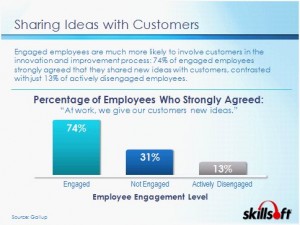What Every CEO Wants: Creativity, Integrity and Perspective
It’s easy to come up with new ideas; the hard part is letting go of what worked for you two years ago, but will soon be out of date.
– Roger von Oech
IBM conducted a study this year in which they asked 1500 CEOs, in face to face interviews, what skills were of paramount importance for the leaders in their organizations, to their business and global competitiveness. You can read the entire study here, but in a nutshell, this is what CEOs care about.
The premise of the study is that change is accelerating and complexity is deepening in all markets around the world. As the world has become increasingly volatile and the future ambiguous, there remain a powerful minority of companies globally that have been able to capitalize on these seismic changes and turn this turbulence into innovation and advantage. These are the keys:
1. Creativity. Yes – your creativity, initiative, inventiveness and passion. More than ever, people have wholly transparant real-time access to relative value and price to the market goods, services that companies are providing, and our ability and willingness to bring our creativity to work can become the discerning factor. Remember 3M famously created post-it notes by allowing people in the organization to express their own creativity. From 3M to Google to Atlassian, some of the most powerful innovations have come from the bottom up within business cultures where, autonomy is offered, creativity encouraged, and ideas flourish.
2. Integrity. I recently had an interaction, and conducted a workshop with a group of women executives at an insurance and financial services group. A running theme throughout the attendees was the challenge of ‘being everything to everyone.’ That is, being the great mom, partner, executive, community service contributor, etc… Here’s a piece of advice I believe from Rick Warren, author of The Purpose-Driven Life. When we think of our life, it’s common to think of ourselves as having different lives – the workout life, the professional life, the partner and spouse life, the parent life, etc. – when in fact we have but one life to live. My encouragement is to give permission to ourselves, and everyone around us to bring our whole selves to every endeavor. The etymology of Integrity is from the Latin integer, meaning whole, oneness. Recognize that each of us is but one person with a rich history and present, and future, and to bring our whole selves to everything we do represents our greatest contribution, and our greatest opportunity to draw from our own rich experience and apply to everything we do.
3. Globalization #3 in importance, in terms of creative leadership was the ability to think globally. One key aspect of thinking globally is to borrow brilliance from all sectors. One finding of the study was that CEOs wanted creative leaders to borrow disruption models from other industries and market sectors. If you are in the IT business, don’t benchmark what other IT business are doing. Go out and borrow ideas from the toy industry or maybe the microlending community – just something outside your usual purview.
Finally “act despite uncertainly.” Yes there is much ambiguity, and yes it can often feel better to wait until things shake out before committing a particular direction. But increasingly CEOs want creative leaders to be taking risks. Acting while others hesitate can pay off. The key to a successful jump is to follow your true convictions and beliefs.






